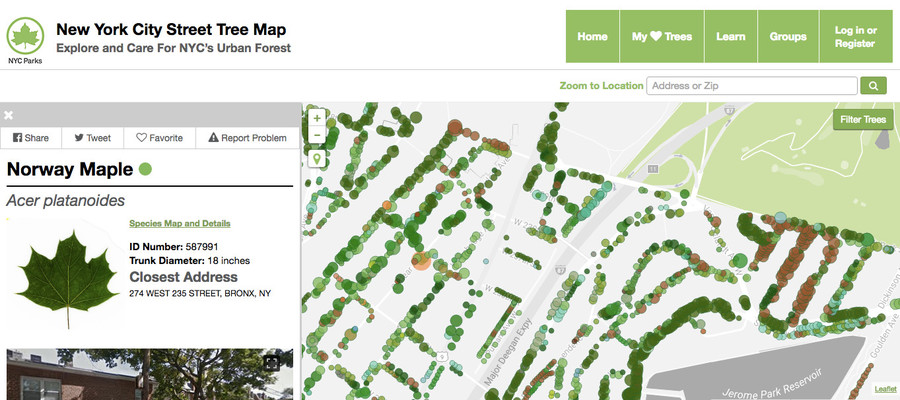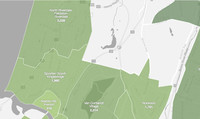New census maps street trees in Riverdale, all 2,028 of them
Riverdale’s streets are home to 2,028 trees, the most common of which is the Norway maple, while Spuyten Duyvil, Kingsbridge and Van Cortlandt Village are favored by pin oaks, and Marble Hill’s tree population boasts a large group of thornless honey locusts.
The city’s Parks Department has published the results of its latest “street tree census” – a result of the work of volunteers who had been counting, measuring and photographing every tree on New York’s streets since May 2015.
In all, volunteers have counted and mapped 685,781 trees on the city’s streets. The number of New York’s street trees has been growing in the two decades the Parks Department’s censuses have been conducted: The latest tally is up nearly 16 percent from the city’s total of 592,130 trees a decade ago and from about 499,130 trees in 1995-96, according to tree census data.
In Riverdale – or, more specifically, in the neighborhoods known as Riverdale, North Riverdale and Fieldston – volunteers have mapped 2,028 trees from 95 species. The number of Norway maples, the largest single group of trees, stands at 215, or 11 percent of the area’s street tree population.
Spuyten Duyvil and Kingsbridge feature 1,985 trees of 97 different species. Among those, there are 232 pin oaks, the largest single group of trees in the area. Pin oaks are also the most common trees in Van Cortlandt Village, where their number stands at 405, or 18 percent of the area’s total of 2,314 street trees. Van Cortlandt Village has a bit less variety than its northwestern neighbors: Its number of tree species stands at 83.
In Marble Hill, volunteers have counted 316 trees of 41 species. The most common one is the thornless honey locust, with 47 specimen in Marble Hill.
Citywide, the most common tree is the London planetree, according to the census. A total of 88,301 London planetrees have been mapped in the city, or 13 percent of the total.
Using formulas developed by the U.S. Forest Service, census workers have also calculated the environmental and economic benefits that New York receives from its trees.
The volume of each tree’s contribution depends on its size and other factors. For instance, a 14-inch-thick Callery pear that grows on Johnson Avenue, near W. 236th Street, intercepts 2,031 gallons of stormwater each year, helps conserve 1,153 kilowatt hours of energy, removes 3 pounds of air pollutants and reduces carbon dioxide by 1,378 pounds each year, according to an interactive map on the census website.
Meanwhile, a pin oak with a trunk diameter of 37 inches that grows a block away on W. 236th Street intercepts 7,122 gallons of stormwater, conserves 2,537 kilowatt hours of energy, removes 6 pounds or air pollutants, and reduces carbon dioxide by 17,746 pounds each year, according to the map.
In all, the trees of New York intercept more than 1.1 billion gallons of stormwater each year, conserve more than 676 million kilowatts of energy, remove 645 tons of air pollutants and reduce carbon dioxide by 628.6 tons, according to the census website. The total value of the benefits that trees provide to New York has been estimated at more than $111.4 million.
To learn more about census results or to find your favorite tree on the map and see the volume of its environmental contribution, go to http://tree-map.nycgovparks.org/









